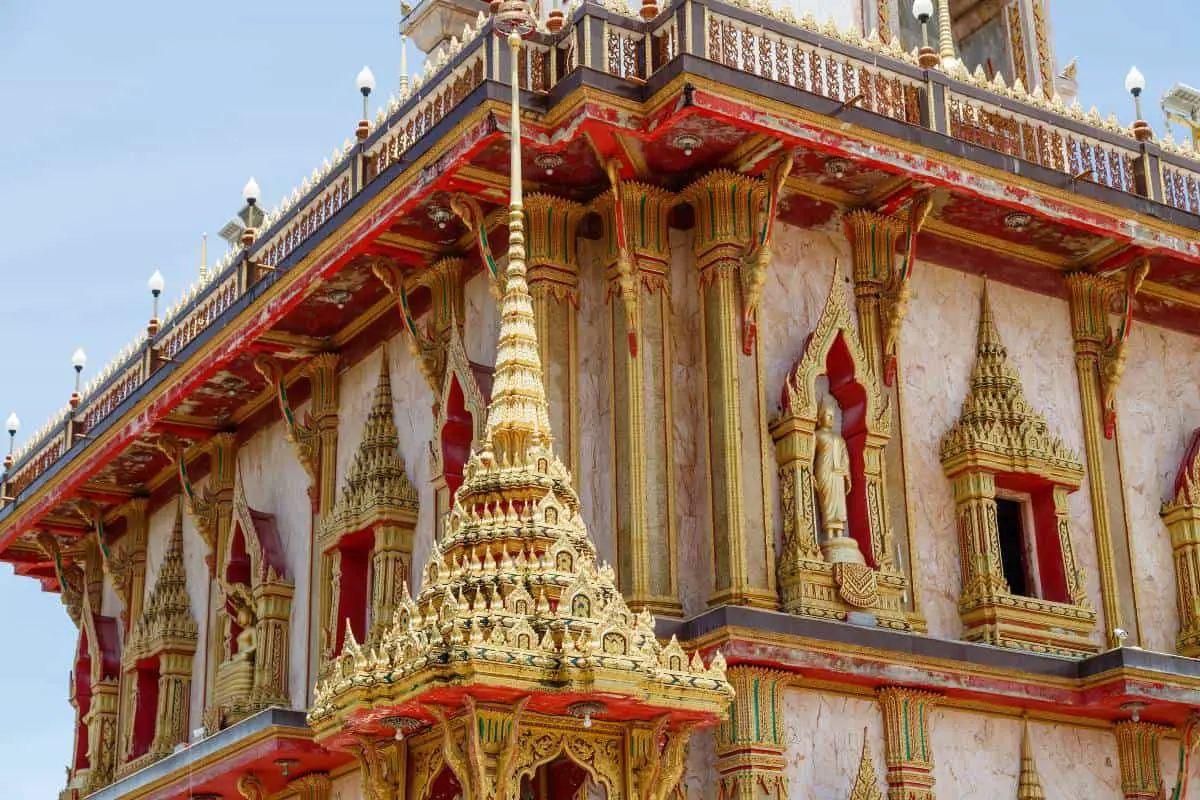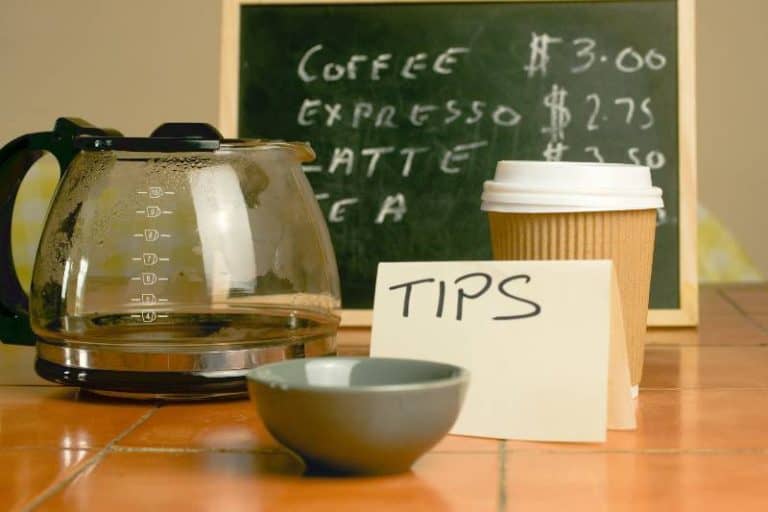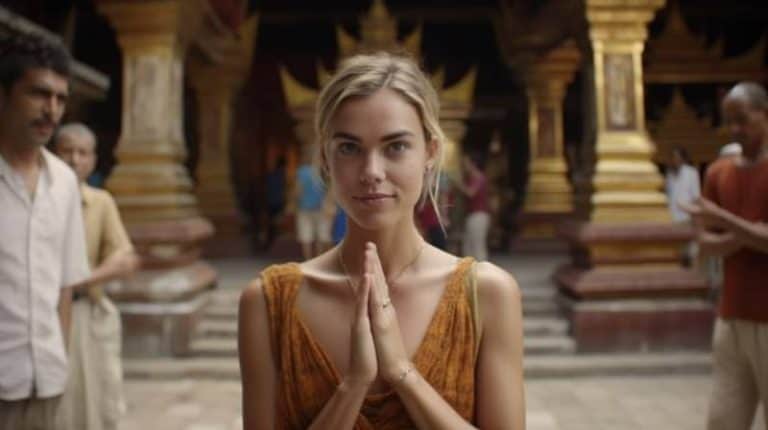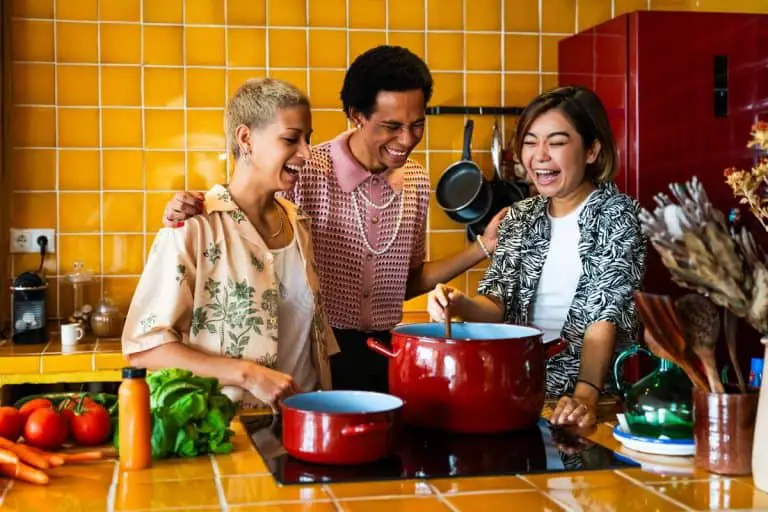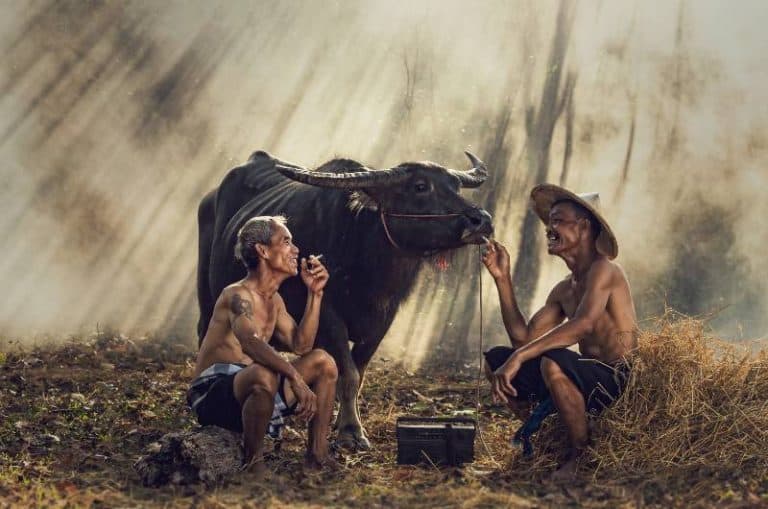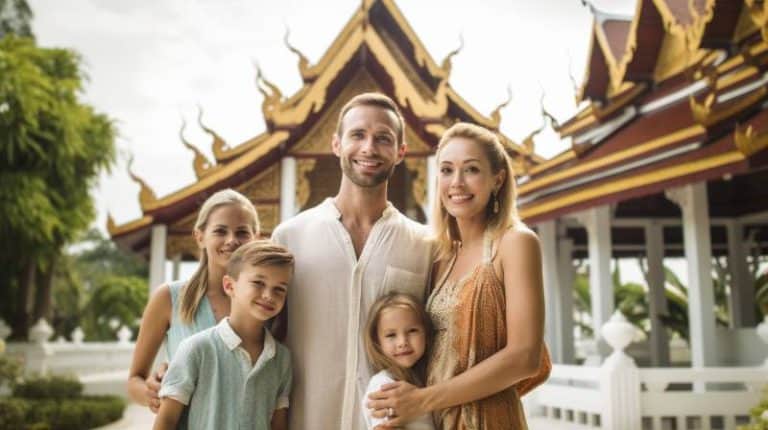Thailand’s Temples: Beautiful Temples To Visit in Thailand
Bangkok may be better known for its street food and neon-lit nightlife, but the capital contains truly stunning displays of religious devotion. As the site of the original royal court, Bangkok not surprisingly became home to intricate temples commissioned by kings and constructed by devoted artisans.
Key Takeaways
- Thailand has over 33,000 Buddhist temples, known as wats, infused into everyday life.
- Temple architecture demonstrates Thailand’s creative spirit, from those covered in shiny beer bottles to an all-white facade.
- Bangkok is home to the enormous Reclining Buddha and the renowned Temple of the Emerald Buddha on the grounds of the Grand Palace.
Thailand’s Magnificent Temples: An Insider’s Guide to the Kingdom’s Most Stunning Sacred Sites
Thailand’s temples are an integral part of both the culture and the landscape. As I discovered after retiring here three years ago, what in Thailand serves religious purposes but also provides community services and tourist attractions. After visiting my fair share of Buddhist temples across the country, I wanted to share some of the most magnificent and unusual. This guide covers the ornate temples found in bustling Bangkok as well as serene ruins farther from the frenetic energy of the capital. Let’s explore some of the kingdom’s most stunning sacred sites!
Bangkok’s Royal Temples
Temple of the Emerald Buddha
Officially named Wat Phra Kaew but more commonly called the Temple of the Emerald Buddha, the grounds house Thailand’s most revered Buddha sculpture. The 66-cm jadeite or jasper statue dates back to the 15th century and is garbed in seasonal costumes by the Thai king himself. While its sparkling green color may have faded over time, its mythical origins and ritual adornments maintain an air of splendor. Its temple location within the walls of the Grand Palace further heightens its importance to Thais.
Temple of the Reclining Buddha
At the 19th century Wat Pho, colossal sizes represent devotion in the shape of the 150-ft long Reclining Buddha. His serene face and mother-of-pearl feet gleam despite wearing through layers of gold leaf. Serving as a monastery for monks and Thailand’s first public university, Wat Pho also instructs traditional healers in medicine and massage. Take time after gazing at the giant statue to wander the complex marveling at the 91 chedis (Buddhist mound shrines) and intricate murals.
Temple of Dawn
Marking the junction between the city center and the Chao Phraya River, the iconic Wat Arun (Temple of Dawn) towers over the Bangkok skyline. Its imposing central spire cleverly combines architectural styles, fusing a Khmer-style prang (tower) with Chinese porcelain shards. While its exterior displays a kaleidoscope of colors and patterns, equally fascinating Buddhist mythical murals decorate the inside. Time your visit for sunset to fully appreciate how its tile work shimmers as it earns its heavenly name.
Tip: For optimal photos of Wat Arun, cross to the opposite bank of the Chao Phraya River. Food and drink riverboat vendors also provide the perfect floating break.
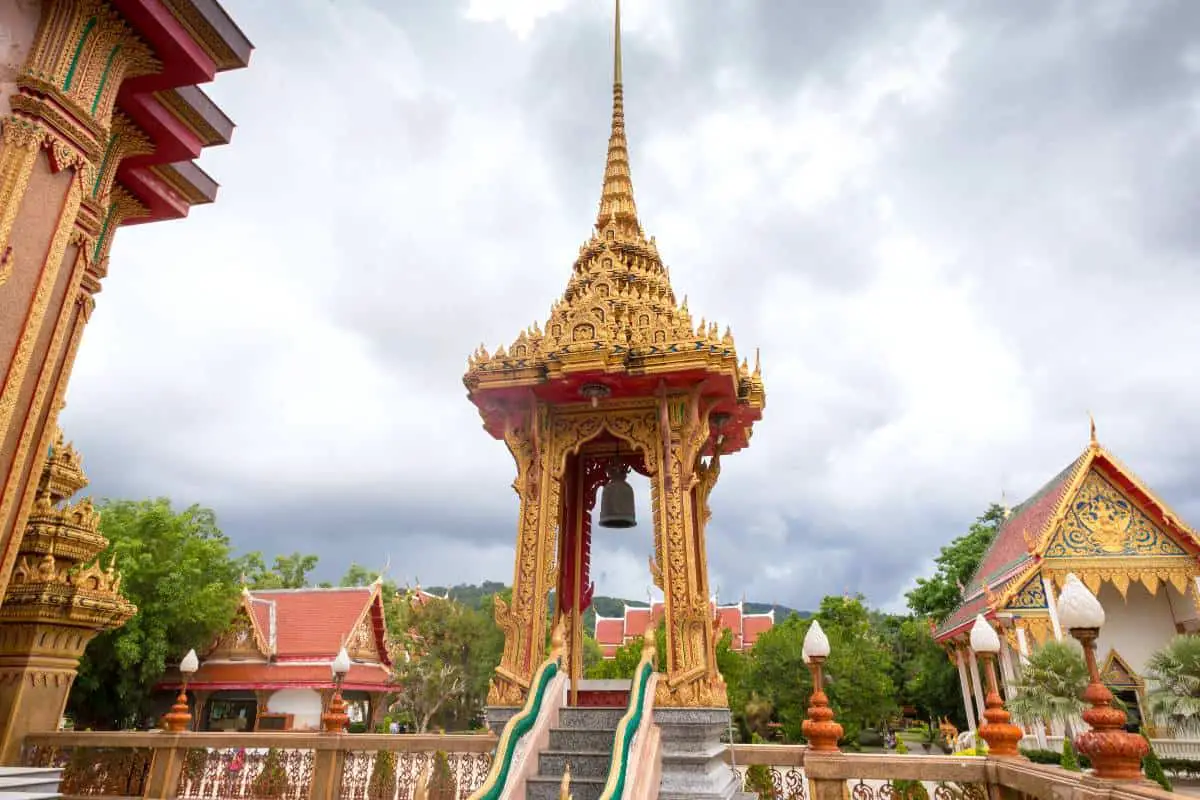
Ancient Capitals’ Tranquil Temples
Beyond the fast pace of Bangkok, several former royal capitals cradle their crumbling but still glorious temples as reminders of once-great kingdoms. Ayutthaya and Sukhothai perfectly balance the atmosphere and history for temple devotees seeking a spiritual experience.
Ayutthaya
Founded in 1350, the Ayutthaya kingdom reigned over the region for over 400 years before the Burmese invaded and destroyed most of the city in 1767. Today the park encompassing the ruins is recognized as a UNESCO World Heritage Site with its remaining temple structures enduring as photogenic relics.
Outstanding examples of surviving Ayutthaya architecture include:
- Wat Phra Si Sanphet – Built-in 1491, this royal monastery turned ruin retains impressive chedis (stupas) nearly 200 feet tall.
- Wat Chaiwatthanaram – Constructed in 1630 on the banks of Mae Nam Chao Prayer River, this Thai-style Buddhist temple inspires tranquility.
Sukhothai
Established as the first Thai kingdom in 1238, this northern city expanded to be a significant force in the region for over 200 years before its decline in the late 1400s. The former site of palaces and temples now forms the Sukhothai Historical Park, another impressive UNESCO World Heritage Site preserving Thai history.
Ramble among the grassy park lanes to uncover the park’s main temple, Wat Mahathat. Admire the iconic large walking Buddha or one of the many smiling meditating Buddha statues positioned around the sprawling grounds.
Pro Travel Tip: Sukhothai is located roughly halfway between Bangkok and Chiang Mai, making it a convenient stopover to visit its evocative ruins.
Striking Temples of the North
The mountainous and jungly terrain of northern Thailand not only produces stunning vistas but also inspiring locations for temples. As Buddhism spread throughout the region by monks and rulers, hill tribe village temples organically blend with nature while royal temple complexes announce their presence at mountain peaks. The major northern cities of Chiang Mai and Chiang Rai provide travelers with convenient bases to search out both types of architectural marvels.
Chiang Mai
Established as the capital of the former Lanna Kingdom founded in 1296, Chiang Mai translates fittingly as “new city” in the Northern Thai dialect. Many neighborhoods across the modern city contain gilded temple roofs peeking out over walls and rooflines. Rather than aimlessly wander hoping to chance upon hidden neighborhood gems, visit these Chiang Mai landmarks:
Wat Phra That Doi Suthep – Overlooking the city from Mt. Doi Suthep, this sacred Buddhist complex dates back to the 14th century. The temple delivers sweeping valley views framed by golden spires and jadeite statues.
Wat Chedi Luang – Constructed at the founding of Chiang Mai itself, this temple houses a partial ruin of what was once an enormous 292-foot tall, 98-foot wide square-based chedi (stupa). Even unfinished for centuries, it impresses with its scale.

Chiang Rai
Far less visited than Chiang Mai, Chiang Rai up north provides a quieter change of pace plus funky and reverent architecture.
Undoubtedly the most Instagrammed structure in town is Wat Rong Khun, better known as the White Temple. This dazzling vision in plaster and glass mosaics almost seems out of place amid the sleepy rural area. Conceptualized and financed by local visual artist Chalermchai Kositpipat, the temple could be mistaken for a snowcapped fairy castle. Its ornate facade with mirrored mosaics disguises a Buddhist sanctum conveying teachings about escaping suffering through lotus blossoms emerging from muddy despair.
While the White Temple attracts selfie-seeking tours during the day, two other Chiang Rai temples reveal their beauty on early morning visits:
Wat Phra That Doi Chom – Surrounded by mists rising from the valley below, the golden chedi of what is also known as Wat Phra That Doi Tung mesmerizes in the soft dawn light.
Wat Huai Pla Kung – Set on the banks of a small lake, chanting monks walking across a causeway to their morning alms run creates an especially meditative scene.
Insider Tip: Stay in Chiang Rai town for nightlife options after day trips to area temples.
Eccentric Temples Using Unconventional Materials
While Thai temples commonly use traditional construction materials like wood and plaster, creativity and resourcefulness have inspired some communities to forge sacred spaces from society’s waste. Where some may see discarded glass or trash, devoted followers have envisioned glittering places of worship.
Wat Pa Maha Chedi Kaew (Temple of Million Bottles) – Since 1984, monks have showcased practical ingenuity by incorporating waste from more than 1.5 million beer and soda bottles donated by nearby factories to create their temple complex. Scheduled completion waits until 2045.
The Sanctuary of Truth – Reaching towards the sky outside Pattaya, this religious wood structure has piqued curiosity since construction began in 1981. Using no nails or screws, skilled artisans have carved intricate scenes from Buddhist and Hindu texts into towering walls exclusive from teak. The building should finish around 2050.
Wat Lan Khuat (Temple of the Million Shattered Glass) – As its nickname suggests, glittering glass shards in all shades of the rainbow cover interior surfaces and columns. The kaleidoscopic effect of refracting light inside this Wat Chan structure amazes all who enter.
Future Travel Hope: I dream I’ll still be enjoying my adopted Asian home by 2050 when these avant-garde temples should finally be finished!
FAQs
What is the dress code to enter Thailand’s temples?
Thailand holds relatively relaxed rules regarding entering sacred sites compared to other Asian countries. However to demonstrate respect when visiting temples in Thailand, shoulders and knees should be covered. Removing shoes is not essential but some temple caretakers request doing so.
How should I address the monks I encounter?
Use polite language when speaking with monks, like calling them Phra to indicate respect. Strict rules prevent them from prolonged contact or handling money from women. Stand when monks pass to show deference.
What items should I bring to donate to the monks?
Monks rely on community donations to survive without income as they dedicate their lives to religious learning. On early morning alms routes through neighborhoods, monks carry metal bowls to receive rice, fruit, desserts, drinks, and some household items. You may prepare similar clean, vegetarian items to offer.
What does “wat” signify?
The Thai word “wat” refers to a Buddhist temple complex, school, or central location for monastic communal living. Wats typically contain several structures like the bot (ordination hall), vihara (sermon hall), and chedi (stupa or reliquary mound). Over 33,000 wats exist across Thailand.
Which Thailand temples are considered the most sacred?
The Temple of the Emerald Buddha, located within Bangkok’s Grand Palace and built in the 15th century, is regarded as Thailand’s most esteemed. Wat Phra That Doi Suthep outside Chiang Mai and the cliffside Wat Phra That Doi Tung near Chiang Rai in northern Thailand are also rated as highly significant.
Start Planning Your Thai Temple Adventures!
I hope this introductory guide to some of Thailand’s magnificent temples has sparked inspiration for your spiritual journeys, whether seeking peace of mind or Instagram glory! With such a variety of ways designed across centuries, travelers can tailor temple trips to match unique interests.
To start planning your Thailand temple itinerary or for advice on settling anywhere in Asia, schedule a consultation with BetterLivingAsia.com founder Tom Kitti. Drawing from over 35 years living in the United States and then extensively across Southeast Asia after retiring, Tom provides relocation guidance, practical tips, and local perspectives to global citizens. Discover your better Asian life!
